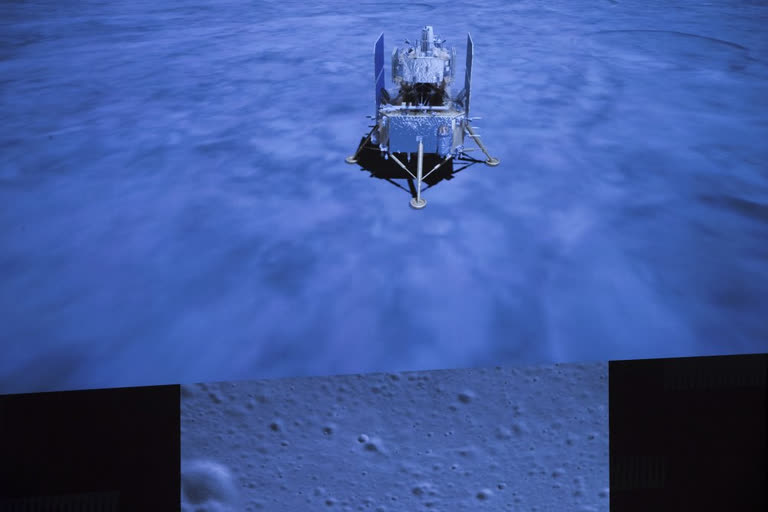Beijing: A Chinese spacecraft sent to return lunar rocks to Earth collected its first samples on Wednesday after landing on the moon, the government announced, adding to a string of successes for Beijing’s increasingly ambitious space program.
“Chang’e has collected moon samples,” the agency said in a statement carried by the official Xinhua News Agency. It said the probe also had successfully unfolded solar panels that will power it.
The probe, launched Nov. 24 from the tropical southern island of Hainan, is the latest venture by a Chinese space program that sent its first astronaut into orbit in 2003, has a spacecraft en route to Mars and aims eventually to land a human on the moon.
Read:|China's Chang'e-5 probe prepares to land on moon
Plans call for the lander to spend about two days drilling into the lunar surface and collecting 2 kilograms (4.4 pounds) of rocks and debris. The top stage of the probe will be launched back into lunar orbit to transfer the samples to a capsule for return to Earth, where it is to land in China’s northern grasslands in mid-December.
If it succeeds, it will be the first time scientists have obtained fresh samples of lunar rocks since a Soviet probe in the 1970s. Those samples are expected to be made available to scientists from other nations, although it's unclear how much access NASA will have, given tight U.S. government restrictions on space cooperation with China.
From the rocks and debris, scientists hope to learn more about the moon, including its precise age, as well as increased knowledge about other bodies in our solar system. Collecting samples, including from asteroids, is an increasing focus of many space programs and China’s mastery of the technology once again places it among the leading nations operating in space.
American and Russian space officials congratulated the Chinese program.
“Congratulations to China on the successful landing of Chang’e 5. This is no easy task,” wrote NASA’s science mission chief, Thomas Zurbuchen, on Twitter.
“When the samples collected on the Moon are returned to Earth, we hope everyone will benefit from being able to study this precious cargo that could advance the international science community.”
